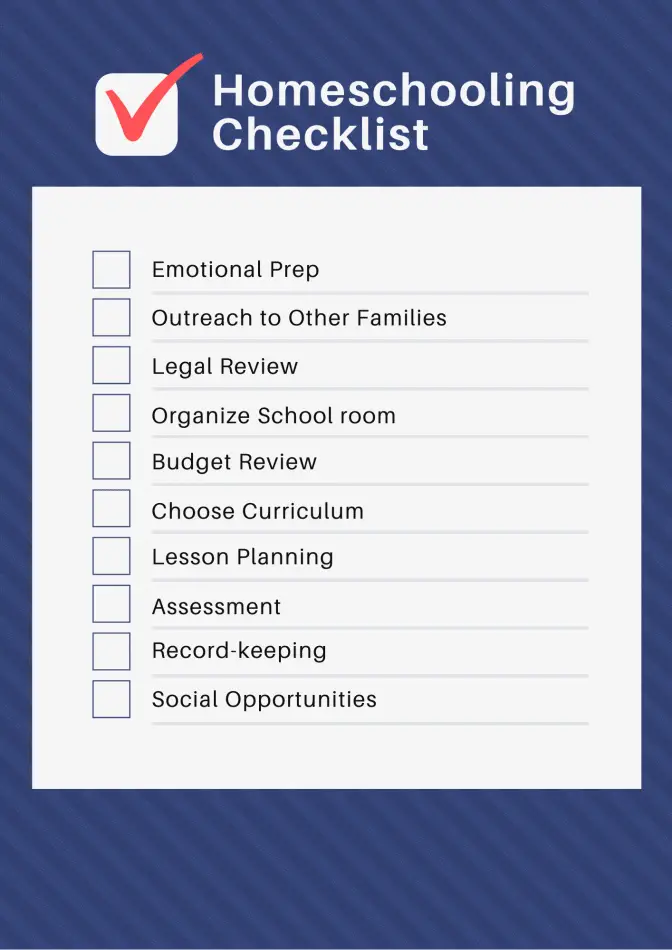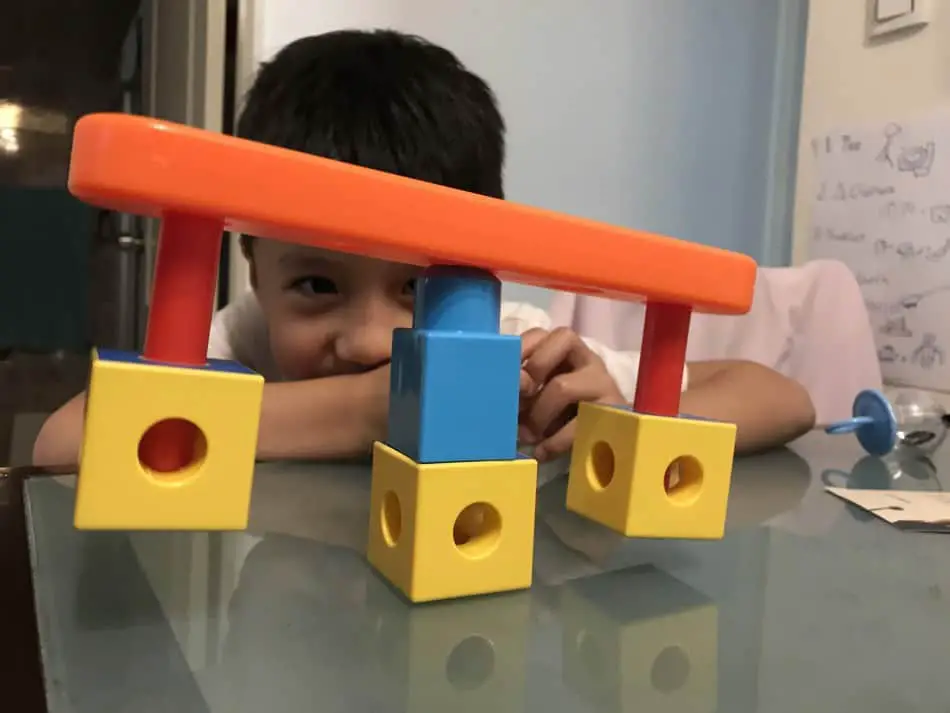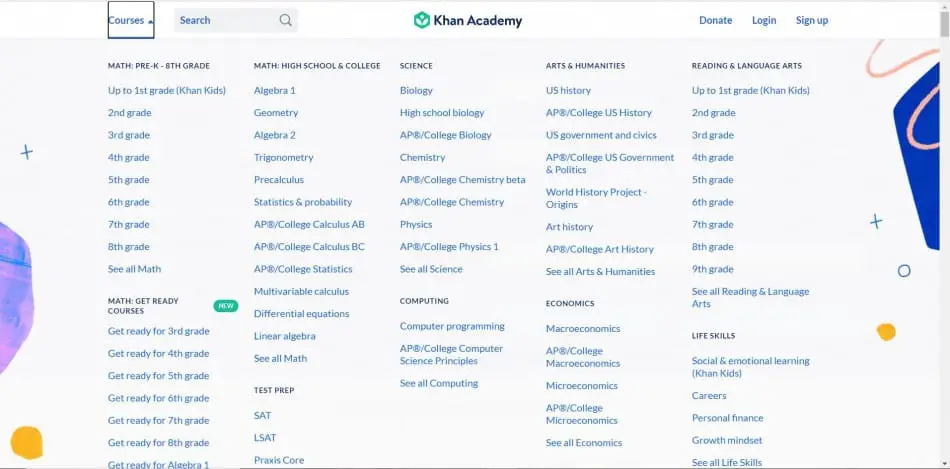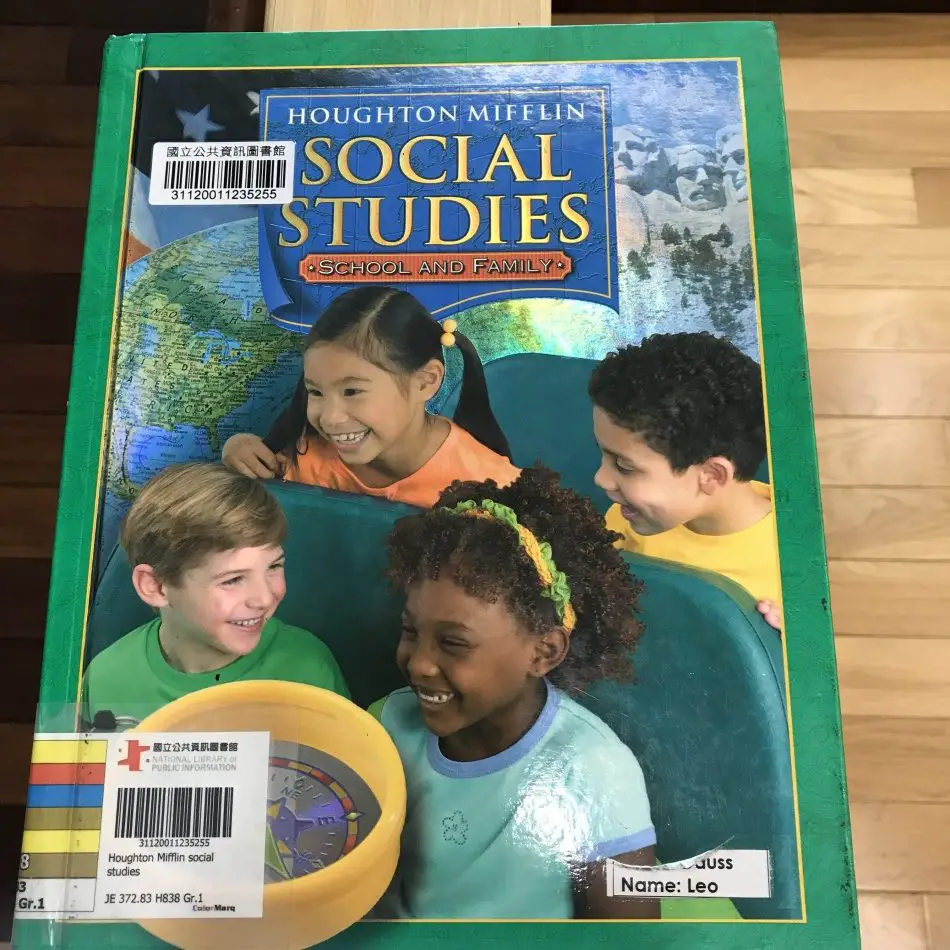This post contains affiliate links.
How do you actually prepare yourself and your family for homeschooling? You can try to approach it from many angles, but we find the best ways are based on a our own 10 pillars of preparation for homeschooling.

You can prepare for homeschooling by starting with your emotions and learning from other families. Then check the legal requirements, organize your schoolroom, budget, and curriculum. Then plan for teaching, assessment, records, and social planning.
Read on to learn more in-depth and useful details or just use our checklist.
Emotionally Preparing by Trial Homeschooling
All families new to homeschooling need to prepare their emotions before getting started. This is a brand new way of education. If your child has already attended public or traditional schools, it’s a big challenge. If your kid is new to schooling in general then it might be a smooth transition. Our experience is with our son who was around 5 when we started to homeschool him. One might argue that it’s not homeschooling because he was not required to attend school yet. But we wanted to start early to see if it could work. We like to call it “trial homeschooling”. Or a soft start of homeschool.
When we say you must prepare your emotions, we mean do we have the patience to follow and prepare a schedule? And how will our child accept us teaching him something? We may have all experienced it when we hear someone say how can you teach your child? How will they listen to you? This is something that you will have to try and and find out. Your child has to get accustomed to it if they are not used to you as being the sole “teacher” in their life. We started to teach our son formally in some reading, writing, and math activities.
We wanted to try it to confirm if we were able to do it! Would our son accept us and have the patience? Would he accept us and emotionally connect with us as his teacher? Since we were new to homeschooling, we wanted to try early. We did it before the deadline for registration to either public or homeschool. As parents, we had to also prepare ourselves for the added pressure of educating our child. It requires more time and resources as well as adjusting our schedule and focus. This trial period for us was important to experience it before starting.

Your attitude towards homeschooling will reflect your values to your children. You will be the teacher, principal, and counselor. We also would like to prepare our son to be more independent. We know this will benefit him in the long run. He will be able to handle things with the right mindset. And he can control and find the passion for his future education.
Homeschool Rituals to Make a Connection to the Classroom
One way to do this is through rituals like keeping the classroom clean by themselves. In Japan, did you know they don’t have janitors? The students are cleaning the public areas of the school and classroom by themselves. This builds their connection to the school and creates a sense of accomplishment. It’s their classroom and they cherish it. Just starting with their bedroom may be a good way to start even before you try it with homeschooling.
Another simple daily ritual of a Pledge of Allegiance in the morning is fun to do. We do this because it helps them memorize something and get a sense of school like I had when I was growing up. Also since we are living abroad my son will have a sense of American culture. And he gets to connect and become familiar with some American customs. Also, some families may want to hold a daily prayer or bible reading session in the morning to get started. This is also a good ritual to instill in the homeschool if you are following a faith-based education.
Outreach With Other Parents and Teachers

As you continue to research homeschooling you will want to connect with other homeschooling families. This is a great way to hear from others in your community and hear firsthand what has been working? What are the resources in your area that are available? You can glean many new insights from other experienced homeschool families. For example, you might want to check out a certain textbook or learn more about an online curriculum. Another parent may be able to show or share an old textbook with you. They might even go online and let you see how their online curriculum is set up.
Another good way is to research the YouTube videos of other homeschoolers online. You’ll find so many helpful reviews of curriculum, methods, and supplies. In the beginning of my research, I watched videos about homeschooling while I was working out. I must have watched 100’s of hours of video but it can bring you up to speed on many subjects. It will also lead to a quick understanding of all aspects of homeschool.
If you can talk with traditional school teachers, this may also be helpful as well. I am lucky because my wife has an educational background from university and is a trained and experienced music teacher. She also has many public school teacher friends whom we have spoken to and shared views on the ideas of homeschool. Some are all for it and some will tell you that you are crazy to homeschool. But you will also learn about the curriculum and challenges that lie ahead. We also got to review some local school books and teacher’s guides. This was very helpful.
Review the Legal Regulations of Your School District
Depending on where you live the requirements for homeschooling will be different. For example, in my hometown of St. Petersburg, Florida, we can get access to the info on how to homeschool easily. The website is clear on the steps, just prepare a letter of intent and submit it to the school district. Make sure to do it before the semester start or review the deadlines. IN all 50 states of the United States, homeschooling is legal. However, there still are certain countries where it’s illegal. So you must check and follow the regulations for your situation.
Most school districts have legal requirements that are favorable to homeschooling, so don’t worry too much about it. In Florida, the only difference to most states is that you must keep records of your yearly assessment of the child’s progress. And this must be carried out with an agreed-to test administered by a certified Florida teacher. If your child does not pass you have a certain timeframe to do remedial instruction. And then the next school term you must once again renew your letter of intent with the school district.
The contents of the letter are simple. Usually, in most states, it’s the child’s name, your identification as a parent or guardian, date of birth. Then once again file it and make sure you receive an acknowledgment. In Florida, you are also responsible to keep a record of the studies of your child. This is not always a requirement in every state, but as a homeschooling parent, you must get used to being well-organized. This keeps you on schedule and also can record your child’s progress.
Organize the School Room in Your Home
To keep your child motivated and not easily distracted you should have a quiet dedicated space. We have written another useful guide on how to teach a distracted homeschool child that you can check out here. The ideal classroom for your homeschool is a separate room with everything needed there. It should be kept away from any windows, or any other chances for distractions. It should be quiet and with no TV or other electronic devices.
The next best setup that we have found is a separate desk in a quiet part of your home. For us, we found a space in the dining room and placed our son’s desk against the wall there. We also have a few bookshelves and storage bins for supplies and all are within reach of his desk. A blackboard or a whiteboard is recommended for demonstrating. But ours also serves as a tool for our son and he enjoys sketching and drawing and playing on it. Being magnetic can also be useful for placing worksheets or other visual aids.
School Records & Portfolio for Students
Another space you must set up is the record-keeping filing cabinets or file folders. It’s best to keep clear records to see how your student is progressing. We also like to record how their evaluations are going and which pieces of work are their best. In your school district, you may be required to show these records if requested within 15 days, for example in Florida. These are spot checks the school district might carry out. However, as a homeschool parent, you should also want to keep organized records for your use. Kids like to see they are making progress. And if you keep good records it’s easy to see this important progress.
Prepare a Visible Homeschool Calendar
Having a calendar in the homeschool is necessary o your student can see the whole picture for the week and month. My son also likes to keep track of the days and it’s a good way, in the beginning, to teach about the days of the month. My son also likes to use the calendar to track his things like did he take his vitamins? He used to ask me every day in the evening, dad, did I take my vitamins? So I had him start tracking this by himself. Having the calendar in the homeschool also can let your child see if he is ahead of schedule or behind. And they along with you can make adjustments.
Review Budget for Homeschool

The HSLDA estimates that it can cost from $50 per child to thousands of dollars. This depends on the overall curriculum, outside courses, books and supplies, and the number of kids you teach. There is a range of ways to make homeschool economical and fit anyone’s budget. You do not need to spend a fortune on curriculum or supplies. In the beginning, there are many free options like online curriculums. You can read up on many homeschooling topics free from the library. This is where we started since we had very little knowledge of homeschooling.
Free Online Resources for Homeschooling to Try Immediately

The online sources to try right away, are Khan Academy because you can sign up today and get started in a few minutes. You can read our article that provides helpful information about choosing the curriculums. And why you should start right away by trying them for free. Both you and your child will enjoy seeing how the tools work and you will get immediate feedback. Your experience from the free online sources can lead you to new ideas about what your family may want to try next.
Other online resources to try are ixl.com where you can do a certain number of free courses per day to try out. They are fun and serve ages from K-12. The company also claims they are used by 10 million students and 95 out of the 100 top school districts also use them. Its costs are very reasonable and start at $9.95 per month so it’s worth a try for at least 1 month. Easy Peasy All in One Homeschool is also completely free and easy to follow. You can start with reading exercises as well as other fun activities that they link to across the web. They have compiled a well-organized free resource as long as you have a PC and internet access.
Used Homeschooling Book Resources are Everywhere!

Besides prepared Open and Go curriculums, textbooks may also be a major investment if you want to own them. We have checked our local library for many useful textbooks, readers, and other reference material. So this can be all had for free. We also came across Bookdepository.com that delivers to you for free anywhere in the world. They just take a bit longer to arrive than other sources. But you can also join various co-ops and FaceBook homeschooling groups and check if other parents want to get rid of their old books. You are sure to find a bargain there. This link shows one mom’s way with 23 resources you can check out.
The Only Way to Get Dads Involved in HomeschoolingMuch of our homeschool room and supplies were already in our home. We didn’t need to spend much to get setup. And the only other major budgeting consideration is your time. One parent will usually take most of the teaching or supervision time to homeschool their kids. This may limit your time to work a “normal” 9 to 5 job. But depending on your family’s situation, you may be able to work around this schedule and adjust it to fit your requirements. My wife and I share the duties and I have taken on the role of curriculum planning and organizer. Call me the principal of our homeschool! This is the main reason we started dadcarestoo.com so I can learn and share what I as a Dad can do for my children’s homeschooling education.
Pick a Curriculum and Go, But You Can Change It!

One topic that gets most of the attention, in the beginning, is the curriculum. You will find so many articles and focus placed on the right curriculum. After we have been homeschooling our son for some time we have found that you will just need to try as many as possible. Feel free to add or adjust them as you progress. We find that you will most likely have a mix of styles and curriculums. Don’t feel you must stick to one particular path. As you proceed with a choice you will see how your child reacts to the material and how you teach or guide it.
Over time you will develop your style and realize which type of curriculum matches your situation. Are you more of a hands-on teacher or are is your child a self-reliant learner? Certainly, if your child is younger it will require more of your one-on-one time with them. But as you develop and as your child gets in the rhythm of homeschooling, you should aim for creating and instilling a love of learning. This will require your child’s input into the whole picture of curriculum development.
As you find out what they are passionate about and which subjects or styles they prefer it will make homeschooling become a new way of life. Trust the process but be willing to change as you go. Don’t get stuck on just 1 style or curriculum. In the beginning, you might decide to budget more to get a more expensive but easy to use prepared curriculum. But as you progress and become more experienced, you might be able to create a less expensive and useful curriculum by yourself.
Lesson Planning for Homeschooling
Once the curriculum is settled, you can begin planning your school year. In the beginning, if you choose a preplanned curriculum you will have an easy to follow system. Most prepared curriculums have a daily and weekly schedule to follow along with a teacher guide. That’s why these systems are called open and go. You open the book and it tells you what you need to do today, this week, and the whole school year or semester. Most plans follow a 36 week school year. The number of lessons will correspond to this timeframe.
Most states aim for 180 days of school and many homeschoolers use this as reference. You may be able to accomplish more in the same timeframe since you will do it more efficiently. And as a homeschool, you may be able to skip or move more quickly. As you are more in tune with your child it will become clear if you can speed up or you need to slow down. But learning at your child’s pace is helpful at times. This is one of the many benefits of homeschooling. As we mentioned you can put the schedule in a conspicuous place so the family and especially your student can see it.
Make Honest Assessments of Your Child’s Progress

This is one area you will need to pay extra attention to. As you will be doing the education by yourself, you will need to be very honest with the student and yourself. Some parents may be more lenient on the grading of assignments or tests. But we need to stress the fact that you must be honest with the results and assessment. You are not benefitting the student in the long term if you enable them to be able to “conveniently” pass the quizzes and tests. How about a research paper and how to grade it?
Most likely you are not a professional teacher so you will need to use some methods like a rubric to assess your student’s work. What’s a rubric? Yes, before we homeschooled, we didn’t know either! You can learn more about rubrics here in this useful article about how to assess your student’s work. But the overall message is that you will need to define a protocol and stick to it to make sure you are providing objective assessments while grading your own child’s work. Depending on your stat’s requirements you might have to provide this data to your school board every year. In Florida, as we mentioned it is required to show that the student is meeting or as they write in the regulations
“the student’s demonstration of educational progress at a level commensurate with her or his ability.”
Florida Statutes for Student Assessment
Record-Keeping for State Requirements & University

The next and very important piece of the homeschool puzzle will also be record-keeping. We mentioned earlier you will need to have filing cabinets and a special place to highlight your student’s work. Kids usually appreciate seeing their good work shown off to the world! Do you remember when you were in school and your teacher put your essay or special drawing on display for the month in a conspicuous place in the school or classroom? Your homeschooled student is not any different. You should highlight their good work and encourage more of it. Show off the high quality work to the family and other students if you have.
More importantly, you need to keep sufficient and accurate records of the progress of the child. In Florida for example, you need to keep these records for 2 years after each grade. That means what did they learn, which texts did you use, which books were read? And what quizzes and tests were given. Did they pass those exams and make progress? Eventually, you will need to compile school transcripts for your student to apply for university if this is the route you choose. The records you keep for their university application process may be the most important besides keeping them for regulatory requirements.
And in case you need to re-enter them to a traditional school, it would also be beneficial for the school district to be able to assess the level of your student. This could save your child from having to repeat a grade or be held back. With clear records and assessments, it makes it easy for the school district to verify your child’s level within their requirements.
Add Social Opportunities to Schedule

In your homeschool schedule, you will need to add socialization time as well. You hear about and see many suggestions for schedules and which are the best ways to hold classes. However, we didn’t see much emphasis on social time. And let me explain what I mean about this important part of your homeschool preparation. In a traditional school, your student will have ample time to meet other kids and a few adults in the normal school day. But in homeschool, we are doing a major part of the work in the home.
Schedule Outside Classes & Extracurricular Social Chances
However, many families who homeschool will share with you that they do more outside classes and extracurricular activities than most children who go to traditional schools. Homeschool doesn’t mean education only happens in the home! You are freer to add field trips, outdoor activities, and extracurricular or unit studies. This variety will add depth and variety to your kids’ education. This enriches the experience and all involved will have more fun. More importantly, this allows your child to build relationships and friendships with other kids and people of all ages.
Find Other Homeschooling Families to Learn Together
You will hear many questions from family, friends, and strangers about social time is limited in homeschool, how can you handle this? This is farthest from the truth because you have more opportunities to create chances for your children to develop friendships with others through outreach and other outside programs and classes. Kids do need to learn from their peers and how to get along with a wide range of age groups. But this will require you to consider and schedule this into your curriculum. Reaching out to the community to find other homeschooling families is a great way to build lasting friendships and to share in the teaching and learning together.
Dadcarestoo is a participant in the Amazon Services LLC Associates Program, an affiliate advertising program designed to provide a means for sites to earn advertising fees by advertising and linking to Amazon.com. We also participate in other affiliate programs which compensate us for referring traffic.

